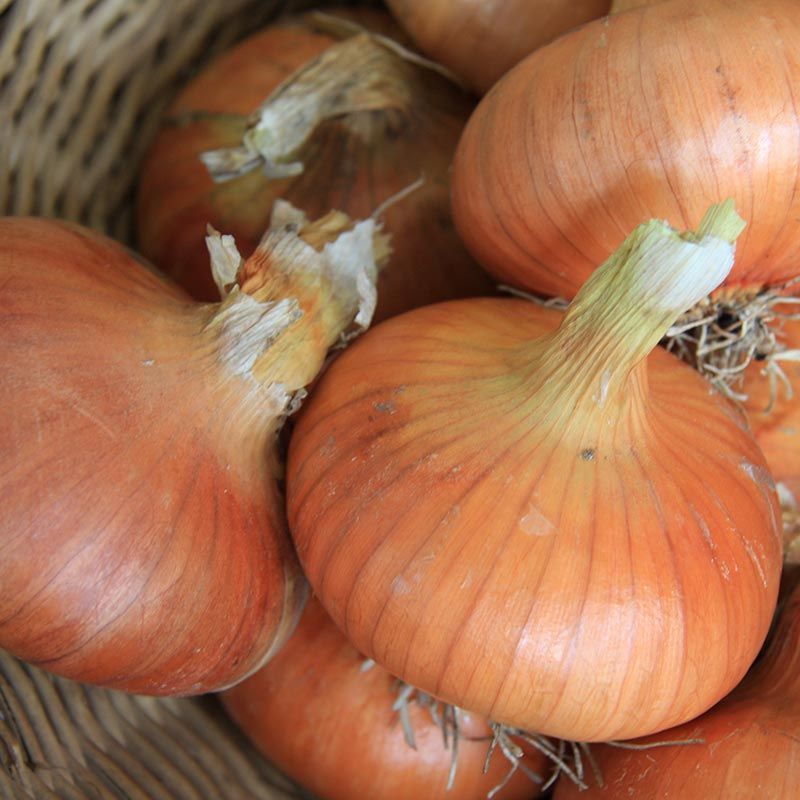Onion – Stuttgarter (Organic)
Price range: £2.30 through £3.60
Flat round yellow onion from Germany with excellent storage qualities. We are excited to be selling this onion originating in the South West of Germany where Ronja is from. This onion also named “Stuttgarter Giants” is of fine flavour and stores well into spring provided that they are kept cool and dry. We recommend growing them in clusters and thinning them out when the plants are spring onion size to be enjoyed as such.

| Month | J | F | M | A | M | J | J | A | S | O | N | D | ||||||||||||
|---|---|---|---|---|---|---|---|---|---|---|---|---|---|---|---|---|---|---|---|---|---|---|---|---|
| Sow | ||||||||||||||||||||||||
| Plant | ||||||||||||||||||||||||
| Harvest | ||||||||||||||||||||||||
Seed Sowing
If you’re growing onions from seed, it is best to sow in January and preferably indoors with heat. Alternatively, they can be sown from February under cover.
They can also be direct-sown from March-April in drills 25cm apart, spacing seeds 1cm apart within the drill. Once plants are established, they should be thinned to 10cm apart.
Transplanting
Transplant seedings into their final growing position in April, spaced 25x10cm apart or clusters at 25 x 30cm if multi-sown.
Plant Care
Onions grow best in weed free, moisture retentive soil that’s had a light dressing of well-rotted manure or compost. Keep well-watered, especially in very dry conditions.
Weed regularly to avoid weeds outcompeting your seedlings. Onions are shallow rooted, so be sure to weed carefully around the base of the plants and between the rows.
Challenges
Leek rust is a common garden disease causing bright yellow spots on the leaves. Often worse in long, wet periods minor rust won’t harm the plants but may affect yield. Make sure to leave at least three years in between alliums in your crop rotation, as once it’s present in your garden there is no way to remove it.
Onion white rot is a devastating fungal disease that causes rot and crop loss. After white, fluffy fungal growth, black round structures called sclerotia form and can remain dormant in the soil for 12-20 years. This means it is highly important not to introduce contaminated soil into your garden via tools or footwear.
Harvest
Onions should be ready to harvest from June onwards, once the neck of the onion has folded over and begun to die back. Handle onions carefully during harvest as any bruising may lead to rot. Make sure to eat any damaged onions straight away.
To improve their storage life, lay them out in full sun outdoors or on a drying rack indoors in a warm, dry space to cure them for a few weeks before putting them into longer term storage.
Seed Saving
Onions are a biennial crop, meaning they will produce flower heads in their second year. To ensure viable seeds, save seeds from at least 5 plants and make sure to stake them to prevent them from falling over when they flower.
You will need to harvest and store your chosen population through the winter in a cool, dry and dark place. Replant the bulbs in the early spring at 50x10cm spacing.
Wait until the seed heads form on the flowers, usually in late summer. Wait for the heads to dry and gather them in a paper bag, shaking it to free the remainder of the seeds.
